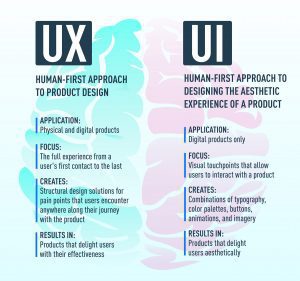Why You Need a Quality Website: Part Two
Welcome to the second instalment of our three-part series about why your business requires a high-quality website with a diverse range of functionalities. We recommend that you read Why you need a quality website: Part One before reading any further, but here’s a brief recap.
Recap of Part One
“A website is the start of your online journey. If it’s poor quality – we’ll dive deeper a bit later in the article – users are going to abandon the site (and your brand) in favour of a competitor whose website satisfies behaviour, sentiment and expectations.”
If you want your business to be seen online and grow in both revenue and audience, you need a premium website build that includes the following elements:
- Web and mobile optimisation
- Well written, relevant and valuable content
- Outstanding multimedia
- Social media integration
In this article, we’ll be covering the importance of a streamlined user experience (UX), easy to use user interface (UI), the significance of SEO functionality and website security.
Ease of navigation (UX and UI)
-
User experience (UX)
Today, a streamlined user experience is non-negotiable. Web developers will tell you that access to so much information can be a double-edged sword because user sentiment and the consequent behaviour have changed dramatically over the last decade. People not only want to be able to access information via mobile devices, but they also want it to load quickly.
Here are some suggestions from Google about other factors that contribute to a beneficial user experience.
- Content readability, relevance and value
- Website structure
- Responsive design
- Non-intrusive ads
- Meeting users’ expectations
Content optimised for mobile devices is the new ‘king’ in the digital marketing realm. It needs to be clear and concise while still communicating the message that leads to the intended call-to-action (CTA). When it comes to ranking organically on Google, well-written, appropriate content is critical to your return on investment (ROI) and the user experience.
-
User interface (UI)
On a general level, a user interface is the ‘face’ of the website. It provides the user with a look and feel consistent with the brand’s core messaging, products and/or services. Webflow comments, “[UI consists of how] each element of the product will look, including buttons, placeholders, text, images, checkboxes, and any visual interface elements people interact with.” A talented graphic designer and web developer are the perfect combination for building a high-quality UX and UI.
 © CareerFoundry
© CareerFoundry
SEO: Your website in the eyes of Google
Your website won’t have an online presence without search engine optimisation (SEO). Marketing influencer Neil Patel states:
“When you create a website, Google will discover it eventually. The Googlebot systematically crawls the web, discovering websites, gathering information on those websites, and indexing that information to be returned in a search.”
From a technical SEO perspective, this means that:
- A sitemap needs to be created
- Your website needs to have Google Webmaster Tools
- You can also ask Google to index your site on the Webmaster Tool URL submission page.
Other website essentials that Google takes into consideration to track performance include:
- Page speed: Data from KISSmetrics shows that “about 40% of people will abandon a web page that takes more than three seconds to load.”
- Domain authority
- Domain rating
- On-page optimisation
- Off-page optimisation
- Keyword rankings
- Click-through rate
All these metrics need to be applied and monitored by marketing professionals. Many other aspects need to be implemented for your website to be found on Google. SEO is not a simple process, and therefore, you must contact a business consultancy that has access to a marketing agency specialising in SEO.
Types of security a business website requires
It’s an unfortunate reality that websites can be compromised and suffer data breaches. These attacks commonly target personal data, card information, and passwords. According to information compiled by First Data, 31% of customers are unlikely to return to websites where they have suffered a fraud experience. Therefore, it’s vital you have the correct online security measures in place.
Here’s a list of the different types of security software a business website needs. Please note: We’ll be taking a deep dive into this topic in an upcoming article.
- Add encryption software
- Apply for a web application firewall (WAF)
- Add bot mitigation software
- Add intrusion prevention systems
- Use advanced monitoring tools
- Install a superior quality anti-virus and anti-spyware software
- Improve network security
- Add a virtual private network (VPN)
- Add HTTPS and an SSL Certificate
- Use a secure web host
Conclusion
As you can see, the architecture and elements needed to build a quality website are vast and require professional assistance from marketers, IT experts, front-end and back-end developers, as well as graphic designers.
An easily navigable UX complemented by a streamlined UI that showcases your brand’s messaging, look, feel, and overall personality is essential for attracting an audience. SEO tactics are required to ensure your website is Google-friendly to rank on search engine results pages. Finally, state of the art security is necessary to protect your customers’ sensitive data.
Please ensure that you invest in these website elements. By doing so, you’ll reap the numerous benefits of satisfied customers. You can potentially expect an increase in conversions, trust and brand loyalty from an ever-growing audience.



